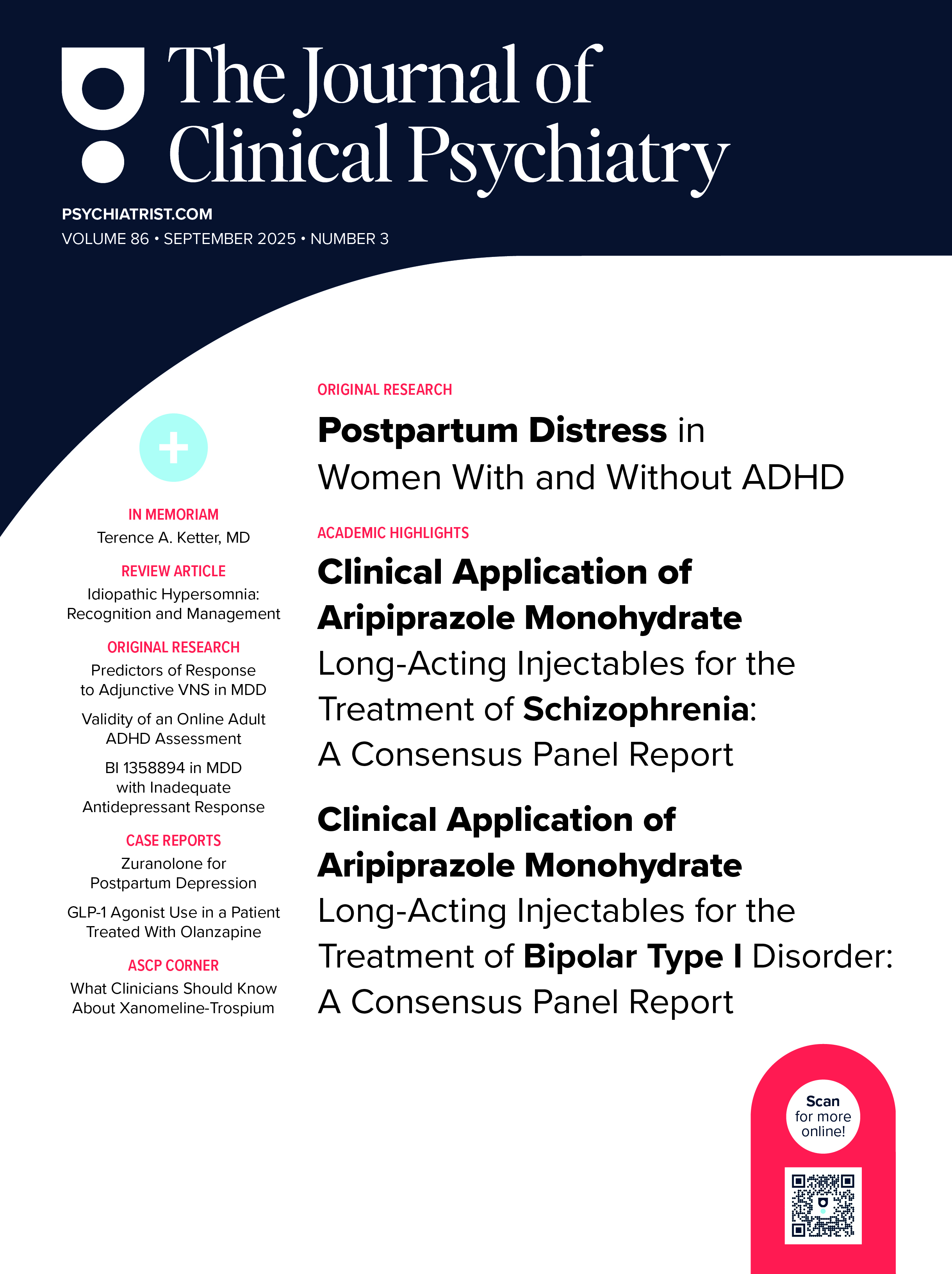Objective: This article aims to identify baseline sociodemographic and clinical characteristics associated with the duration of the index major depressive episode (MDE) and to assess the effect of the current MDE duration on response and remission rates with up to 14 weeks of citalopram.
Method: Eligible participants met DSM-IV criteria for nonpsychotic major depressive disorder, scored >= 14 on the 17-item Hamilton Rating Scale for Depression (HAM-D-17), and were not resistant to adequate antidepressant treatment in the current episode. The first patient was enrolled in July 2001 and the last visit for the last patient in follow-up was in March 2006. The evaluable sample (N = 2851) was divided into 4 groups based on the index MDE duration at study entry: acute (= 42 months, N = 394). These 4 groups were compared in terms of baseline sociodemographic and clinical characteristics and treatment outcomes. Citalopram was generally begun at 20 mg/day and raised to 40 mg/day by weeks 2 through 4 and to 60 mg/day (final dose) by weeks 4 through 6. Logistic regression models with adjusted post hoc analyses were used to control for associated baseline characteristics. Response was defined as >= 50% reduction in baseline 16-item Quick Inventory of Depressive Symptomatology-Self-Report (QIDS-SR-16) scores at exit. Remission was defined as <= 7 on the HAM-D-17 or <= 5 on the QIDS-SR-16.
Results: MDE duration was longer in primary care settings, blacks, Hispanics, single or widowed, unemployed, publicly insured or uninsured, older, and less educated participants and in those with lower income, less recurrence, or greater concurrent general medical or Axis I comorbidities. HAM-D-17 remission rates ranged from 31.0% (acute group) to 24.1% (ultrachronic group). HAM-D-17 remission rates were significantly related to MDE duration (p = .0010), but after adjustments for baseline differences among the 4 groups, remission rates were not different. QIDS-SR-16 response rates were lower for the subacute and chronic groups but not different for the acute and ultrachronic groups after adjustment.
Conclusion: Longer MDE duration is associated with socioeconomic disadvantage and greater Axis I and medical comorbidity. Episode duration per se does not significantly affect the likelihood of remission.
Trial Registration: clinicaltrials.gov Identifier: NCT00021528
Members Only Content
This full article is available exclusively to Professional tier members. Subscribe now to unlock the HTML version and gain unlimited access to our entire library plus all PDFs. If you’re already a subscriber, please log in below to continue reading.
Please sign in or purchase this PDF for $40.00.
Already a member? Login





